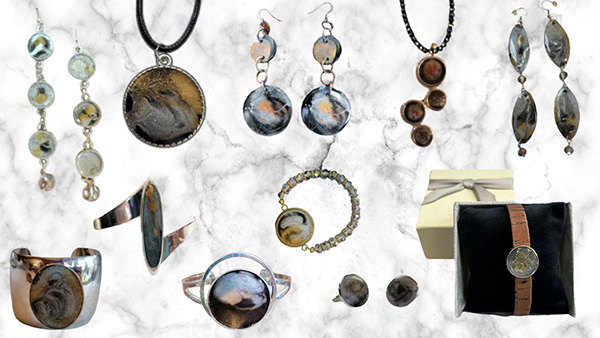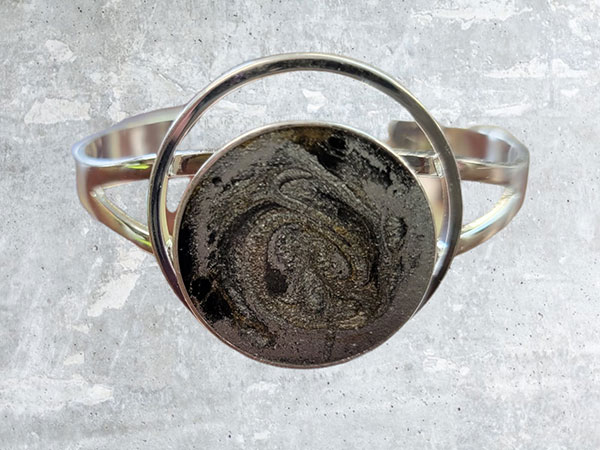
Michelle VanBibber knows grief: Her husband died in 2020 of a brain cancer known as glioblastoma. While his loss is a tragedy, the jewelry designer also knows how her jewelry and his memory will now help others through that life-altering experience.
VanBibber says she hopes to make every May her time to raise funds and awareness through her recently launched Go Gray collection, a specially crafted line that honors Michael VanBibber and contributes to the nonprofit VanBibber Service Legacy. May also is Brain Tumor Awareness Month.
The VanBibber Service Legacy uses its funding for three things, VanBibber says. First, it puts targeted money toward glioblastoma research. Second, it offers caregivers and their families a financial lifeline on an as-needed basis for everyday items, including household bills.
Finally, it helps patients like her husband retain a service dog for use during their illness—a canine companion that in some cases can cost $15,000 or more to obtain but brings significant quality of life to the person with cancer and their family, VanBibber says.

“My therapy was the designing and creating [of the Go Gray collection],” VanBibber says. “Helping other people helped me when I was moving through my grief. It brings it back, but it also helps you process things as well.”
Michael and Michelle met at Virginia Tech, where they both were in a service fraternity Alpha Phi Omega. They had two children, Tyler and Helina, and they were enjoying a trip together to a jewelry show when Michael had a seizure while driving his car. Michelle says that experience was terrifying enough, but then he got the brain cancer diagnosis as a result. He died around 11 months later.
On average, a person with brain cancer lives about 15 months, VanBibber says, so having the right treatment if possible to extend the quality of their lives as well as to help their families is essential, she knows now.
Since then, VanBibber has worked to raise awareness of the challenges families face when a loved one is going through cancer treatment. For example, she recently testified via Zoom before Congress about the Stop the Wait Act, which seeks to eliminate the insurance-benefits waiting period for people with disabilities, including people who are having cancer treatment.

Helping families get service animals is also important to VanBibber. She recently visited her husband’s service dog, Mushu, who the family rehomed to a woman near her home in South Fayette, Pa., who also is battling brain cancer. These service dogs can do almost anything, VanBibber says, including aiding patients with balance issues to opening doors and even doing laundry.
VanBibber says the Go Gray collection came about as she started doing art again. She began mixing resin dyes and found that the combination of silver and gray felt not only right but also healing. She added a little gold as well, she says, for hope.
While she will fundraise year around for brain cancer, May will continue to be her big push toward telling her husband’s story, VanBibber says.
Recently, VanBibber and her daughter went to a pre-award gift suite for Oscar and Grammy nominees, and they gave Go Gray pieces to the nominees in their gift bags. VanBibber says her heart swelled to see these celebrities talk to or reach out later to her daughter about their own losses due to cancer, a result she didn’t expect but truly appreciated.
“They sent messages and talked about their own loss of a parent,” VanBibber says. “It was incredible to see how much good resonates.”
Top: Michelle VanBibber is giving back to her community and other families who are going through a brain-cancer diagnosis through her Go Gray jewelry collection, a fundraising effort in memory of her husband, Michael (photos courtesy of Michelle VanBibber).
Follow me on Instagram and Twitter
- Subscribe to the JCK News Daily
- Subscribe to the JCK Special Report
- Follow JCK on Instagram: @jckmagazine
- Follow JCK on X: @jckmagazine
- Follow JCK on Facebook: @jckmagazine






